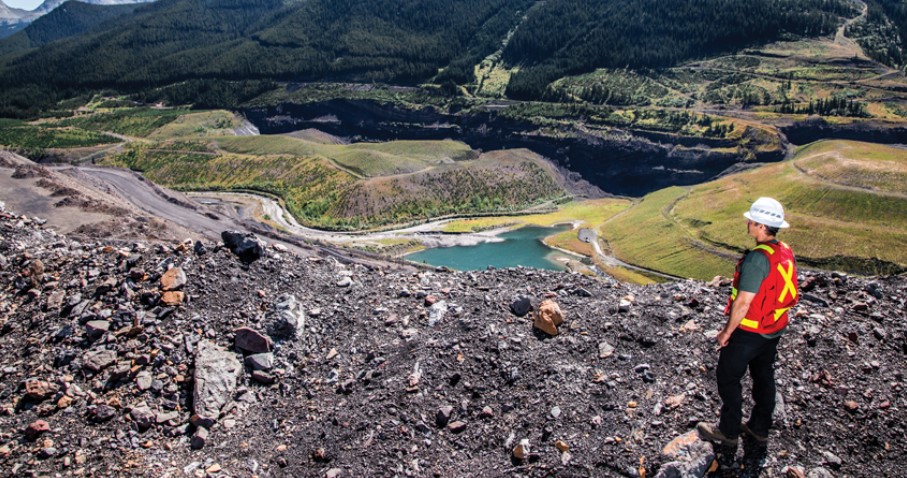- Write by:
-
Thursday, December 14, 2023 - 23:41:32
-
102 Visit
-
Print

Mining News Pro - A Glencore-led consortium’s successful $9 billion bid for Teck Resources’ steelmaking coal unit could face tougher environmental clean-up obligations, as water pollution from the mines comes under increasing scrutiny in the US and Canada.
Canada’s Environment Minister Steven Guilbeault told Reuters that Ottawa and Washington are close to requesting a study of selenium contamination from Teck’s Elk Valley mines in southeast British Columbia.
The research would be carried out by International Joint Commission (IJC), a bi-national organization set up under the 1909 Boundary Waters Treaty between the US and Canada to prevent and resolve disputes over shared waters.
An IJC request would likely mean the consortium could eventually face stronger regulations and need to put aside more cash to cover future reclamation liabilities, environmental lawyers said.
Selenium, a naturally occurring element that is toxic to fish in high concentrations, has been leaching for decades from the piles of waste rock surrounding Teck’s mines.
Teck has spent more than C$1.2 billion ($889 million) since 2014 to tackle the pollution. Yet the annual average concentration of selenium in the Elk River near where it enters Lake Koocanusa, straddling the US-Canada border downstream, was 5.77 micrograms per litre in 2022, well above the 1 microgram per litre level recommended by Canadian federal government guidelines, according to a US Geological Survey (USGS) study released last month.
Conservationists and Indigenous communities downstream report falling fish populations and deformities like missing lower jaw plates, and have been demanding officials make an IJC request for years. The Biden administration added its support last year.
“We’re also involving First Nations on both sides of the border and I think we’re close to coming to an agreement on that,” Guilbeault told Reuters on the sidelines of the COP28 climate summit in Dubai last week.
A joint request would be a “huge deal” for the mines, said Nigel Bankes, professor emeritus of resource law at the University of Calgary, that could ultimately result in a “negotiated termination of the polluting activities” if companies operating in Canada are found to be contaminating US waters.
A Glencore spokesperson declined to comment on the potential impact of IJC request on its mining activities in BC.
Provincial regulations
Upon receiving a request, the IJC appoints a board with an equal number of experts from each country to study the issue, Sarah Lobrichon, the IJC’s public affairs manager said.
Its final recommendations are non-binding but in practice governments usually implement them, such as with the clean-up of the Great Lakes.
Calvin Sandborn, former legal director of the University of Victoria Environmental Law Centre, said recommendations made under the Boundary Waters Treaty would likely lead to “better regulations than just leaving it to Canada”.
The new business, Elk Valley Resources, will implement Teck’s ongoing plan to improve water quality in the valley, boost Canadian research and development spending by 50%, and spend at least C$200 million on rehabilitation and closure activities, Glencore said.
Sandborn was skeptical that would be enough.
“C$200 million goes pretty fast when you’re talking about contamination of an international watershed,” he said.
A final IJC report would likely take around five years, Bankes estimated, and Glencore could continue mining in the meantime.
The BC government is also planning to amend its 10-year-old water quality management deal for the Elk Valley, which could result in the mines’ owner needing to adjust water treatment plans, the province told Reuters.
Teck is providing a C$1.9 billion clean-up bond to the BC government, which is expected to rise in future, the province said, without specifying by how much.
Glencore would apply with all applicable regulations, the company spokesperson added.
A Teck spokesperson said the company’s four existing water treatment facilities remove between 95% and 99% of selenium from the water, that selenium concentrations had stabilized and were reducing downstream, and that new treatment capacity is coming online.
But the USGS study showed that Teck’s treatment plants have the greatest effect on reducing selenium concentrations in the Elk River in autumn and winter low-water season. The treatment is less effective at reducing concentrations and the mass of selenium moving downstream during spring and summer’s higher water volume months.
“We know right now they’re violating all of our US water laws, they are harming us, and that’s what the treaty is meant to prevent,” Tom McDonald, Chairman of the Confederated Salish and Kootenai Tribes in Montana and Idaho, said.
“There’s no way they can allow this to continue.”
Short Link:
https://www.miningnews.ir/En/News/627767
No comments have been posted yet ...